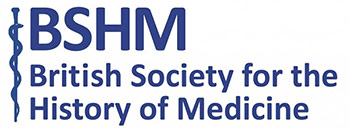Limited supplies of penicillin and Allied restrictions on German access to the drug in the immediate aftermath of World War II led to its recovery from the urine of treated patients. Susanne Krejsa MacManus explains.
German research on penicillin started only in 1942 and then on a very small scale.[1] Gerhard Domagk (1895-1964), the German scientist who in 1935 had developed sulfonamides, had advised the Nazi government to concentrate on improving of “his” type of antibiotics instead of trying to get its own penicillin production going.
It took Germany till the end of 1943 to really understand the importance of penicillin, but because of the efforts of the Allies to restrict information and materials,[2] German scientists were not able to learn about the right mould, nor could they develop the process to get a good supply.
From autumn 1945, British and American forces increased the amount of penicillin flown into hospitals in Berlin – mostly for their own soldiers as a treatment for sexually transmitted diseases. But the occupying forces faced a dilemma: on one hand, they had to look after the health of the population of the occupied areas; on the other hand, there was a hostile atmosphere against the German population – at least in the first months after the end of the war. Germany was categorised as a “defeated enemy” – in contrast to Austria which was categorised as a “victim”.
There was even a third aspect. The German pharmaceutical industry was known as being innovative and effective. The occupying forces hoped for “penicillin made in Germany” and encouraged companies like I.G. Farben, Hoechst and Chemie-Grünenthal to start such an undertaking.
The USSR did not have penicillin production of its own, although they claimed two of their scientists had invented the antibiotic long before Alexander Fleming. As early as early May 1945, Soviet forces who were eager to get penicillin as part of German reparations were pushing the German company Schering .[3]
Since one of Schering’s production sites lay in British territory, the company got support from the British element of the occupation forces for building laboratories and getting raw material (as this ad shows.).[4]

Salzburger Nachrichten, 9/1/1946 Schering AG produces penicillin Berlin, As the British broadcast has reported, the Germany pharmaceutical company Schering AG in Berlin will manufacture penicillin for Germany. The British military government has promised its support to the company in procuring the laboratory and the necessary material, so far as it is available in Germany.
But sufficient output was not available before the end of 1946/the beginning of 1947.
Two-thirds excreted
During their struggle to set up a production site, scientists at Schering recalled that two- thirds of penicillin given by injection left the body very quickly, so quickly that injections had to be repeated every few hours.[5] “If we could get the urine of patients treated with penicillin”, the scientists speculated, “we might be able to reclaim and concentrate this substance.”
The British and American forces permitted them to collect the urine from their hospitals on the condition that they got their share of the recycled substance. From March 1946, Schering’s scientists organised milk-churns and bicycles and went from hospital to hospital to collect patients’ urine. The recycling process was successful, and in spring 1947 it was extended into American and British areas of West Germany. In April 1949, nearly 5000 liters of urine from 3153 patients were collected from hospitals. This activity lasted till 1950, when the manufacturers’ penicillin production was sufficient to meet demand.
Recycling penicillin from urine was not a new idea, but its use on this scale was was exceptional. It showed that the German researchers had clearly understood the character of penicillin being excreted from the organism so quickly. Secondly, the process of recycling penicillin purified the substance, which at the initial injection had produced sharp and unpleasant feelings for the patient. And third, it shows how Schering’s researchers could act on their own initiative, without having to ask boards and committees for permission as they would have to do today.
Susanne Krejsa MacManus PhD is an independent journalist, author and archivist in Vienna. She is a member of the History of Medicine/Medical Humanities working group of the Commission for History and Philosophy of the Sciences at the Austrian Academy of Sciences (ÖAW).
References
[1] I. Pieroth: Penicillinherstellung – Von den Anfängen bis zur Großproduktion, Heidelberger Schriften, 1992, p. 103.
[2] P. Rostock: Die Wunde, Berlin: De Gruyter, 1950, p. 290.
[3] J.-P. Gaudillière, B. Gausemeier: Molding National Research Systems, OSIRIS 2005, 20:180-202.
[4] Schering A.G. Berlin produziert Penizillin, Salzburger Nachrichten, 9. 1. 1946, p. 2.
[5] J.H. Humphrey: Excretion of Penicillin in Man, Nature 3920, 1944, 765.
